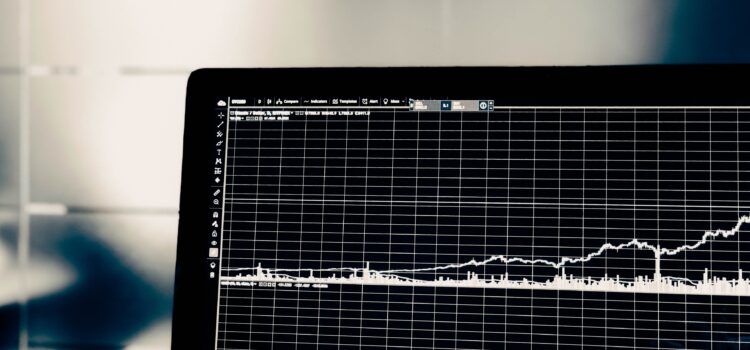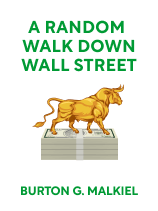

This article is an excerpt from the Shortform book guide to "A Random Walk Down Wall Street" by Burton G. Malkiel. Shortform has the world's best summaries and analyses of books you should be reading.
Like this article? Sign up for a free trial here .
What are some examples of historical stock market returns? What can you learn from these examples?
The best way to understand returns at work is to examine examples of historical stock market returns. Looking at examples of historical stock market returns will show you how prevailing market conditions affected stock market returns.
Keep reading for a guide to historical stock market returns.
Determinants in Action: Historical Stock Market Returns
Here’s a guide to historical stock returns, which will help you better understand what determines stock market returns:
Period I: 1947–1968
The first historical stock market return we’ll be looking at is from 1947-1968.
The post-WWII period was an advantageous time to be invested in common stocks, less so in bonds. Due in large part to Kennedy’s tax cut in the early ‘60s and government spending to finance the war in Vietnam, employment was high and consumer spending considerable. By 1968, P/Es were north of 18, and stocks were returning 14% annually on average.
However, bonds did not fare nearly as well, posting an average annual return of 1.8% during the period (returns including inflation were actually negative for the period). The main factors contributing to bonds’ poor performance were low initial interest rates—the government had pegged government bonds’ interest rates at a maximum of 2.5% to finance WWII cheaply—and rising interest rates as the years wore on.
Period II: 1969–1981
The financial story of the period between 1969 and 1981 is all about inflation. A concatenation of events—increased demand caused by Vietnam War stimulus and oil and food shocks in the mid-1970s—resulted in an inflation rate of 6.5% by the end of the 70s. By 1981, inflation had risen to double digits, forcing US Fed Chairman Paul Volcker to raise interest rates significantly. Unfortunately inflation didn’t immediately slow down, and unemployment spiked (so-called “stagflation”—inflation combined with a stagnating economy).
Returns on stocks and bonds suffered mightily from these rough economic conditions. Although the average annual return on stocks was 5.6% for the period, returns were negative after factoring in inflation. Bonds suffered even worse: Yields in 1969 anticipated a 3% inflation rate; with inflation nearing 8%, returns were utterly wiped out.
Careful readers will wonder: If stocks are supposed to be an inflation hedge, why did they also underperform during this period? The answer lies not in falling earnings or dividends—which, the evidence shows, remained robust—but rather in stocks’ P/E multiples. Simply put, investors were scared—they weren’t willing to pay a premium for solid earnings and dividend growth. Thus stock prices dropped precipitously, slashing returns.
Period III: 1982–early 2000
Considered by Malkiel to be the golden age of asset returns, this era found stock and bond prices adjusting to the inflationary environment and offering attractive returns.
In bonds, average annual rates of return over the period were around 13.6%, a very attractive number. One reason returns were so high was high initial yields (approximately 13%). Because inflation was high at the outset of the period (around 8%) and investors were wary after the bond market catastrophe in the previous period, issuers had to offer high yields to attract investment. When interest rates fell and inflation moderated over the course of the period, bondholders reaped the benefits.
In stocks, average annual rates of return over the period were even better at 18.3%. Again, the poor returns of the previous period created a pessimistic environment wherein assets were undervalued. In 1982, P/E multiples were 8, signaling investor skepticism about companies’ prospects for solid future growth. However, by 2000, P/E multiples had nearly quadrupled to 30. This new investor optimism raised returns to unprecedented heights.
Period IV: 2000–2009
If 1982–early 2000 the high for investors, 2000–2009 was the comedown.
During this period, often referred to as “the lost decade,” average annual returns for stocks were woeful: –6.5%. First there was the bursting of the dot-com bubble, which saw P/E multiples plummet. Then there was the 2008 financial crisis—caused by another bubble, this time in housing—which caused stock prices to decline even further.
One of the few bright spots during this spell was the bond market. Bonds posted an average annual return of 6.4%, offsetting some of the pain of stocks (if you were diversified enough to have bonds in your portfolio).
Period V: 2009–2018
As was the case in 1982, 2009 offered the kind of pessimistic conditions that could—and did—lead to windfall returns. This historical stock market return example shows how returns work in response to a crisis.
During this period, as the economy recovered from the financial crisis, earnings grew by double digits and P/E multiples rose as well, resulting in an average annual return on stocks of 17.5% (just a point behind the golden age of 1982–2000).
Bond returns during this period, though far less sensational than stocks, were still positive at 3.8%.
The above list of historical stock market returns will help you understand what factors contribute to annual rates of stock market return.

———End of Preview———
Like what you just read? Read the rest of the world's best book summary and analysis of Burton G. Malkiel's "A Random Walk Down Wall Street" at Shortform .
Here's what you'll find in our full A Random Walk Down Wall Street summary :
- A comprehensive and entertaining introduction to the world of finance
- Practical investment principles that work for every skill level
- The advantages of index investing






